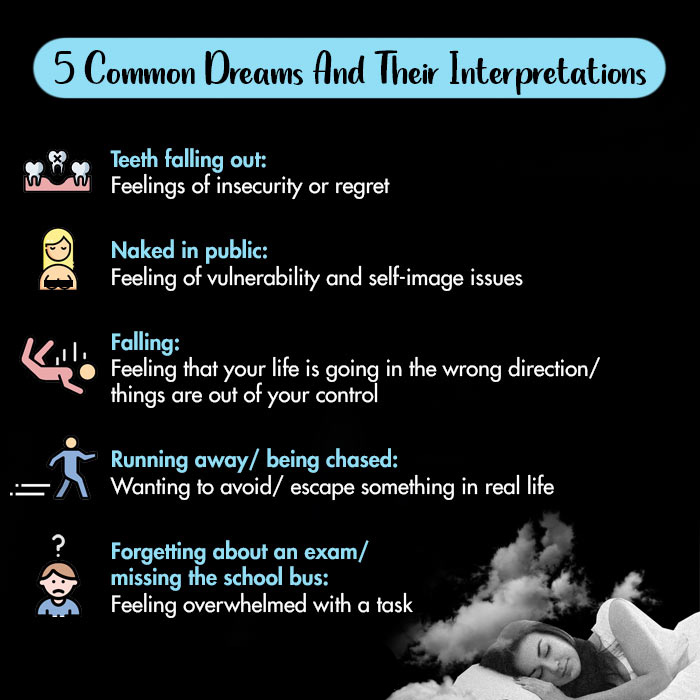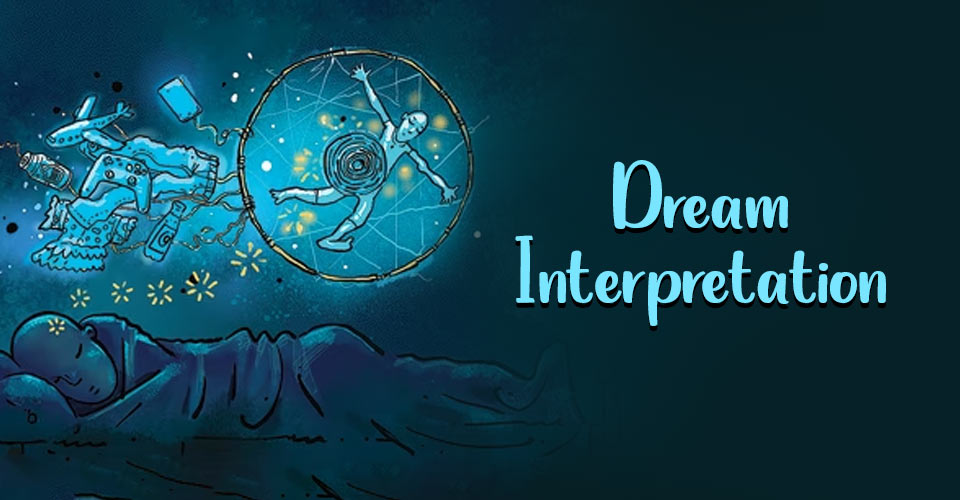Dream interpretation is the process of assigning meaning to dreams. This analysis offers new perspectives into the nature of a person’s mind, emotions, and thoughts.
What Is Dream Analysis?
Dream analysis or interpretation is a therapeutic technique that uses motivated reasoning to find meaning in the content of dreams.
Dream interpretation is the cornerstone of psychoanalysis and psychotherapy, designed to draw insights 1 Fogli, A., Maria Aiello, L., & Quercia, D. (2020). Our dreams, our selves: automatic analysis of dream reports. Royal Society open science, 7(8), 192080. https://doi.org/10.1098/rsos.192080 from a client’s psyche and cognitive processes that dictate his/her behavior. The scientific study of dreams is called oneirology.
The practice of dream interpretation goes back to the Babylons, the Sumerians, and the Greeks. Several techniques of dream analysis figure in the religious texts of cultural traditions across the world.
In the middle of the 19th century, the first scientifically-based dream research took place. However, in the early 20th century, with the publication of Sigmund Freud’s The Interpretation of Dreams, dream interpretation came to be incorporated into psychiatric practice. Today, dream analysis is used in psychotherapy to treat mental health disorders like depression, anxiety, personality disorders, schizoaffective disorders, etc.
What do dreams mean?
A dream is typically a succession 2 Glucksman M. L. (2001). The dream: a psychodynamically informative instrument. The Journal of psychotherapy practice and research, 10(4), 223–230. of images, emotions, ideas, and sensations that occur in the rapid-eye movement (REM) stage of sleep. Commonly, it is thought to represent our repressed or unconscious desires and wishes.
It is also interpreted as random signals fired by the brain during sleep, as it consolidates and processes information gathered during the day or life events.

Types Of Dream Analysis
The different types of dream interpretation in psychoanalysis include:
1. Freudian Psychoanalysis
Freudian psychoanalysis is drawn from a collection of psychological theories and therapeutic strategies formulated by Austrian psychologist Sigmund Freud. Dreams, according to Freud, consist of our unconscious thoughts, emotions, wants, drives, and memories that in some way influence our behavior and personality.
The sources of such dreams include stimuli from the external world, subjective experiences, organic stimuli within the body, and mental activities during sleep.
In fact, Freud’s dream interpretation sees dreams as the road to understanding the unconscious. To that end, the content of a dream should be analyzed to reveal its latent meaning to the dreamer.
Read More About Freudian Psychology Here
2. Gestalt Therapy
Dream analysis in Gestalt psychology was developed by psychiatrists Fritz Perls and Laura Posner Perls. In Gestalt therapy, the dream is understood as development support and as something that is existentially important. Gestalt theory believes that prior perceptions, sensations, feelings, and experiences act as the sources of dreams.
During therapy sessions, experiential techniques (including dream work 3 Holzinger, B., Nierwetberg, F., Cosentino, L., & Mayer, L. (2021). DreamSenseMemory – a Gestalt-based dream-work approach embracing all our senses. Research in psychotherapy (Milano), 24(2), 529. https://doi.org/10.4081/ripppo.2021.529 ) are used to help individuals safely and directly confront and work through difficulties. Often, the client is asked to play out component parts of the dream or the dream itself, taking the role of the different characters in it.
3. Jungian Archetypes
Developed by psychiatrist Carl Jung, this type of dream analysis theory uses Jungian archetypes to assess the value and content of dreams. Archetypes 4 Zhu C. (2013). Jung on the nature and interpretation of dreams: a developmental delineation with cognitive neuroscientific responses. Behavioral sciences (Basel, Switzerland), 3(4), 662–675. https://doi.org/10.3390/bs3040662 are the deepest forms and patterns of the psyche that express primal modes of thought inherent in the evolutionary structure of the human brain.
In contrast to the Freudian “retrospective” dream approach, the approach to Jungian dream analysis is prospective. According to Jung, dreams are “compensatory”, that is, the unconscious mind often paints a picture that is contrary to one’s conscious thought in an attempt to counteract the same.
4. Cognitive Theory Of Dream Interpretation
The cognitive theory claims that dreams are manifestations 5 Nir, Y., & Tononi, G. (2010). Dreaming and the brain: from phenomenology to neurophysiology. Trends in cognitive sciences, 14(2), 88–100. https://doi.org/10.1016/j.tics.2009.12.001 of stored memory representations. Dreams form the basis of people’s mental conceptions and actions in the waking world. These are also perceived as the embodiment of everyday schemas, scripts, and general knowledge.
Read More About Cognition Here
5. Existential Therapy
In this approach, dreams are explored through an existential lens. The dream images of the client are explored, interacted with, analyzed, and provided meaning through art.
The dreams often analyzed in this form of therapy involve content 6 Feizi, M., Kamali, Z., Gholami, M., Abadi, B. A. G. H., & Moeini, S. (2019). The effectiveness of existential psychotherapy on attitude to life and self-flourishing of educated women homemakers. Journal of education and health promotion, 8, 237. https://doi.org/10.4103/jehp.jehp_473_18 like the goal of life, existential vacuum, life control, acceptance of death, and the realization of meaning for the future.
Benefits Of Dream Analysis
The benefits of dream interpretation include:
- Understanding oneself better
- Achieving personal growth and goals
- Developing better skills related to conflict management, communication, decision-making, emotional intelligence, etc.
- Creating an accurate record of lived experiences and happy memories
- Providing insights into underlying mental health conditions
Mental Health Benefits of Dream Analysis
The use of dream analysis in therapy 7 Stone M. H. (2012). Dream analysis in the psychodynamic psychotherapy of borderline patients. Psychodynamic psychiatry, 40(2), 287–302. https://doi.org/10.1521/pdps.2012.40.2.287 is indispensable. Dream interpretation is often used to address various mental health conditions 8 Schredl, M., Bohusch, C., Kahl, J., Mader, A., & Somesan, A. (2000). The use of dreams in psychotherapy: a survey of psychotherapists in private practice. The Journal of psychotherapy practice and research, 9(2), 81–87. such as
- Stress disorders (eg: PTSD) [Read more]
- Schizophrenia and other psychotic disorders [Read more]
- Generalized anxiety disorder [Read more]
- Depression, etc. [Read more]
Recently, a cognitive behavioral technique called image rehearsal therapy has been developed to address mental health concerns associated with stress, trauma, and chronic nightmares.
Drawbacks Of Dream Analysis
The clinical practice of dream analysis and interpretation also suffers from a number of drawbacks 9 Napias, A., Denechere, E., Mayo, W., & Ghorayeb, I. (2021). Assessment of dream-related aspects and beliefs in a large cohort of French students using a validated French version of the Mannheim Dream questionnaire. PloS one, 16(3), e0247506. https://doi.org/10.1371/journal.pone.0247506 . The following are some of the criticisms of the practice.
- Dream interpretation sometimes involves negative and deterministic views of humanity
- Dream analysis may impose concocted meanings and symbolism into dreams which are otherwise, as the activation-synthesis hypothesis states, just another form of thinking
- Dream analysis theories are largely subjective and they lack scientific standards and universal applicability
- Dream analysis and interpretation are prone to misinterpretation and incorrect conclusions
- Dream interpretation in therapy may negate treatment outcomes, exposing the client to unwarranted stress and anxiety
Tips For Analyzing Your Dreams
Consider the following tips to interpret your dreams:
- Try to recall your dreams with accuracy every day.
- Maintain a dream journal. Consider a physical dream diary or a smartphone app to document your dreams.
- Research how your dreams may be influenced by personal ideologies and biases, religious beliefs, and interpersonal relationships. Try to identify symbols and associations in your dreams.
- Communicate with your friends and family about the dreams you find distressing.
- If your dreams distress you, consult a therapist. Unpleasant dreams or nightmares may be manifestations of underlying mental health conditions. A healthcare provider can help make a diagnosis and discuss treatment if needed.
Takeaway
Dream interpretation is a controversial practice in clinical settings. However, recent trends of do-it-yourself dream interpretations, coupled with the effectiveness of psychotherapy, have proved that finding and understanding patterns in dreaming can be life-changing. Particularly for people suffering from untreated trauma and other mental health conditions, dream analysis can help in healing and wholeness.
At A Glance
- Dream interpretation is the assigning of meaning to dreams.
- It is also a therapeutic technique used in psychotherapy to treat mental health conditions.
- Dream interpretation can aid in developing a better understanding of oneself and interpersonal skills.















